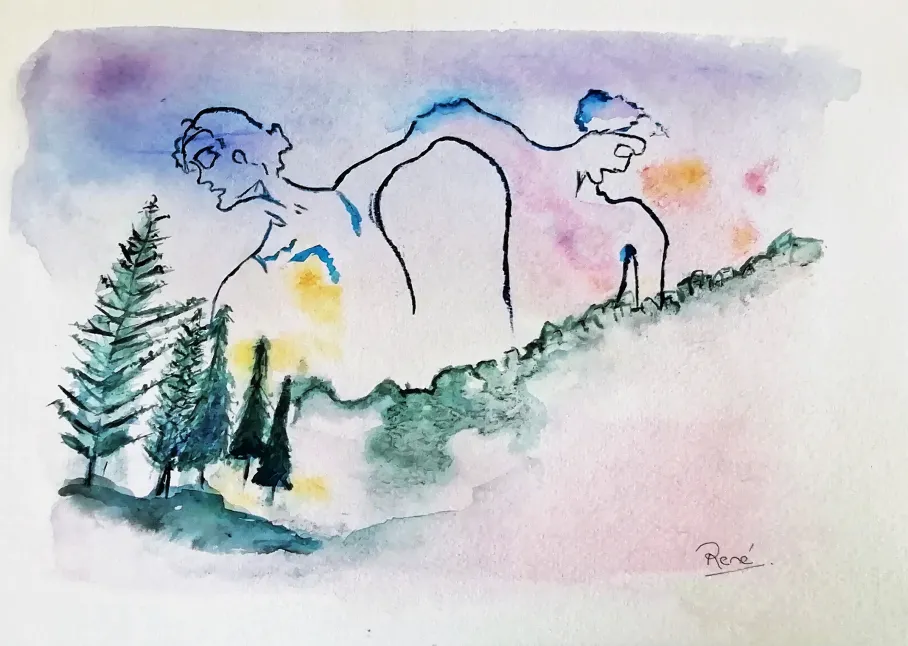“I had quite a job selecting a shortlist from the shortlist and eventually my favourite. In many of the poems I found beautiful imagery, as well as poignant moments and situations. I let the spirit and definitions of ekphrastic verse guide me in my final decision. I chose ‘Fault Lines’ as the poem which in my opinion amplifies and expands a core idea. The poet has cleverly used the different meanings of a geological concept to develop parallel perceptions in the reader’s mind. The poem becomes much more than mere description of the picture provided. Oxford Dictionaries offers this definition of fault lines: 1) a place where there is a long break in the rock that forms the surface of the earth and where earthquakes are more likely to happen, and 2) an issue that people disagree about and may, as a result, lead to conflict. Already in the first stanza we find the darker questions of devotion linked to the quest of going inside a mountain. Geology and emotional danger in association or perhaps juxtaposition, the reader has to read to find out. Judging technically, I enjoyed the sound effects in the poem. Without becoming clumsy or heavy, the little echoes, assonance and alliteration drive the action along. A line such as ‘littered with thistle’ tickles the mind’s eye and the poetic ear. In the last stanza, the b-alliteration (‘borderless boundary that can never be breached’) emphasises the profound wisdom that is presented as the poem’s closing viewpoint. Details and specifics anchor the narrative (‘bindweed, cheatgrass’) while also alluding to unpleasant situations or events between two people. The couple is hungry and thirsty, they pull each other up. They negotiate out croppings. This is no vague journey. The last stanza returns to the ‘mountain’ that appeared in stanza 1. The arching that is thus created echoes the shape of the arms in the artwork. The emotion of dismay, surprise, horror or despair that may be implied by the artwork, is subtly prompted by the openendedness of the last stanza, when the mountain waits for realization to dawn on the two tired people. I can write much more on this poem, but will leave the other readers the opportunity to analyse and enjoy an intricate poem that reads so effortlessly, one is initially mislead to think that it is simple.”
